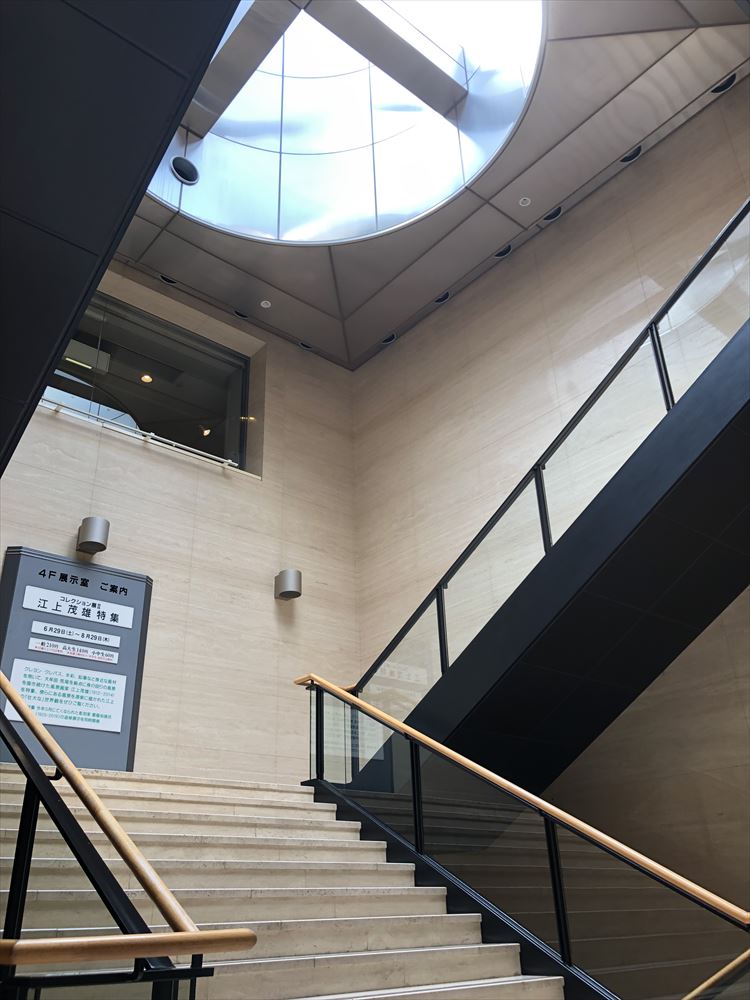Fukuoka Prefectural Art Museum
Contents
Unless we city-dwellers take a moment to look up from our bowls of Hakata ramen, we may often forget that Fukuoka City is also the hub of a wonderful prefecture in Kyushu that reaches from the shores of the inland Ariake Sea in the west to nearly kissing the main island of Honshu on the northeast. It is a natural wonder of rolling mountainsides and flora and fauna galore which has been the muse to artists for many a long year.
The Fukuoka Prefectural Art Museum is a diminutive building in the very northern reaches of Tenjin in Susaki Park, a rather unexceptional wedge of greenery near the waters of the River Naka. The walk from busy Tenjin through quieter streets and the sparse park may indeed feel like you have left Fukuoka City behind entirely as the deep brown brick of the museum`s imposing façade looms over the swaying treetops. Having said that, the Prefectural Art Museum is probably the city’s smallest gallery or museum and if you haven’t already seen the museum’s distinctive tower as you approach then you may come upon it unawares. The first floor, in contrast to the higher levels, is clad in sheet glass and metal support beams.

The current museum opened in 1985 but the building, designed by Modernist architect Takeo Satou, opened in 1964 when it was the Fukuoka Prefectural Cultural Hall. The interior still has a very strong mid-twentieth century Modernist aesthetic. Entering the museum immediately brings you to the small information desk and the wide stairs leading up to the next floor. There is no broad atrium; the architecture leads you to take the stairs without pause, unless you divert yourself to the rather large and fetching café on your left. The spaces here are low and broad, always leading the eye to look around rather than up and down. The brass bannisters of the stairway lead you to the second floor mezzanine which has a sort of balcony – its low tables set with metal-frame chairs are a sight which could have been lifted directly out of a 1960s architectural magazine. Even the colours are muted greys and dun milky tea under the spot lighting. On this floor can be found a large screen with short programmes related to the current exhibitions.

You may reach this point and begin to wonder where the actual galleries and exhibits are. Aside from a floor guide at the entrance there is minimal signage. A short step from the mezzanine will lead you to the central stairway that runs through the centre of the building like the core of an apple. Bright light from the large circular glass opening in the roof gives a reassuring focus after the shadowy chambers we just walked through. This stairway is how you get around and makes navigating between exhibition spaces easy. The third floor has four exhibition spaces and the fourth has just one larger space. The visitor is advised to check the exhibition schedule before you visit. The museum seems to have no permanent exhibitions so it is not a place you could reliably expect to while away hours at any given time. One upcoming exhibition which may be of interest to readers is ‘Oh! Sumo Exhibition!` from around mid-October 2019 until just after New Year.
Once you have reached the fourth floor you may be forgiven for thinking that Takeo Satou designed his building upside-down. While the lower levels are sparse the highest floor is full of distractions. As well as the largest of the museum’s exhibition spaces, there are video booths showing highly educational videos on art from all over the world across a span of centuries. But perhaps the crowning glory of the museum is its small but perfectly formed art library. As well as art periodicals, among its 30’000 volumes are books on photography, picture books of Japanese art, works on Western art and books of exhibitions from all over the world. An absolute must for the art enthusiasts among you. Sadly one cannot borrow the books but there are tables and chairs for studying and the view over the park is quite relaxing.

On my visit the fourth floor exhibition space was host to the works of twentieth century Kyushu artist Shigeo Egami. Working mostly in pastels, Egami’s pointillist style is mostly hazy rural scenes or Kyushu landscapes in rich high-contrast tones. It put me in mind of Pissarro or Seurat. A great quality of such an exhibition is that inspires one to travel and see Kyushu more! Around the corner from the video booths is a rather staggering selection of leaflets and newsletters about galleries and upcoming exhibitions from all over the country. If you are planning a trip to another part of Japan and would like to know of a cultural distraction at your destination then you’re bound to find information about it here.
The Fukuoka Prefectural Art Museum is a little more spartan and specialised than other galleries and museum in Fukuoka City but it is nonetheless an important and worthy cultural centre not just in the metropolis but the prefecture as a whole. If you are in the area then the café alone is worth a visit but otherwise, keep an eye on the museum website. It would be a shame to miss a chance to see some of the prefecture’s finest artistic achievements in one of Tenjin’s finest Modernist buildings.
Fukuoka Prefectural Art Museum
| homepage |
|---|
| https://fukuoka-kenbi.jp/ |
| address |
| Fukuoka-shi, Chou-ku, Tenjin 5-2-1, 810-0001 |
| 開館時間 |
| 【展覧会】午前10時~午後6時(入場は午後5時30分まで) 【美術図書室】午前9時~午後5時30分 |
| 休館日 |
| 月曜日 |
Written by Roger Ferrari
